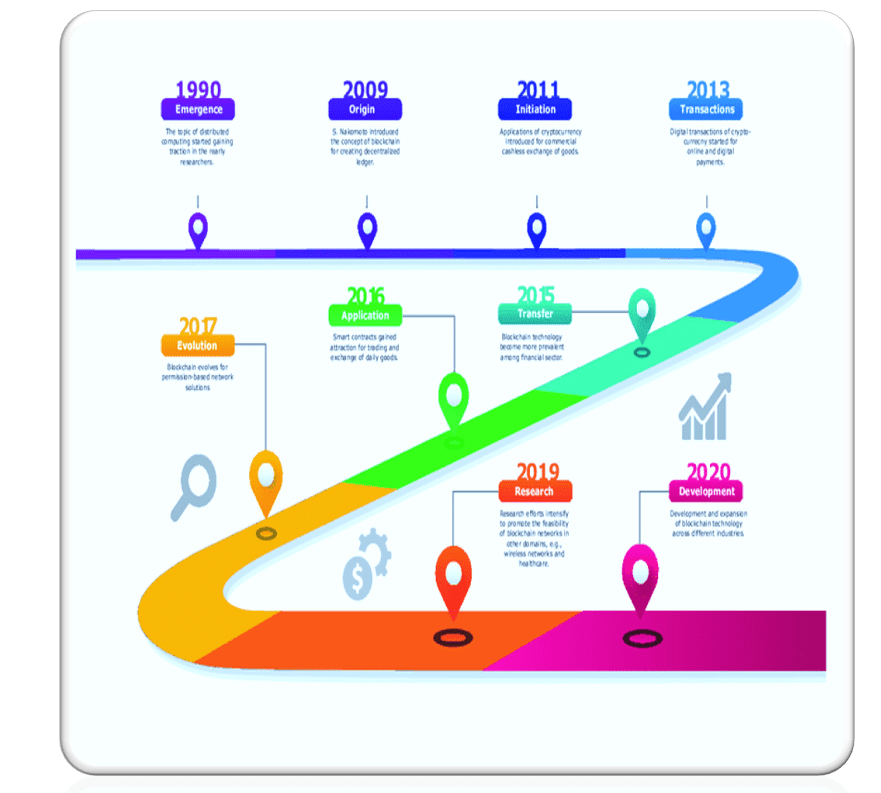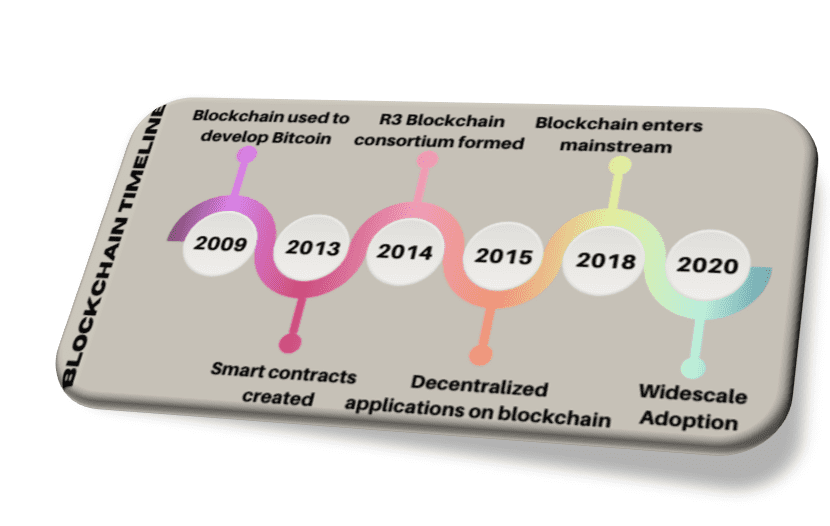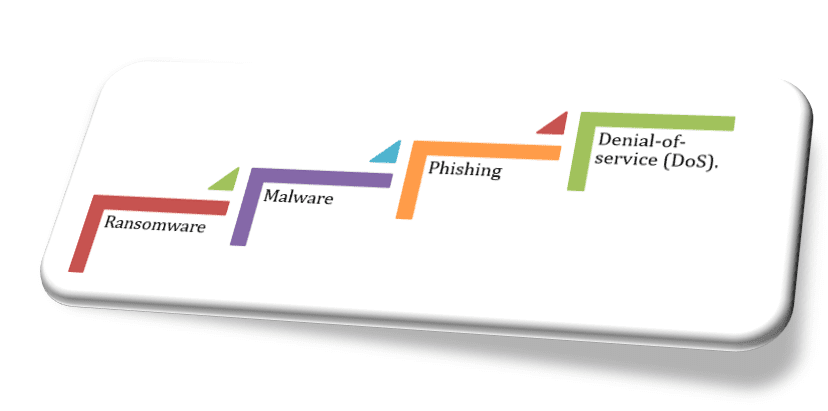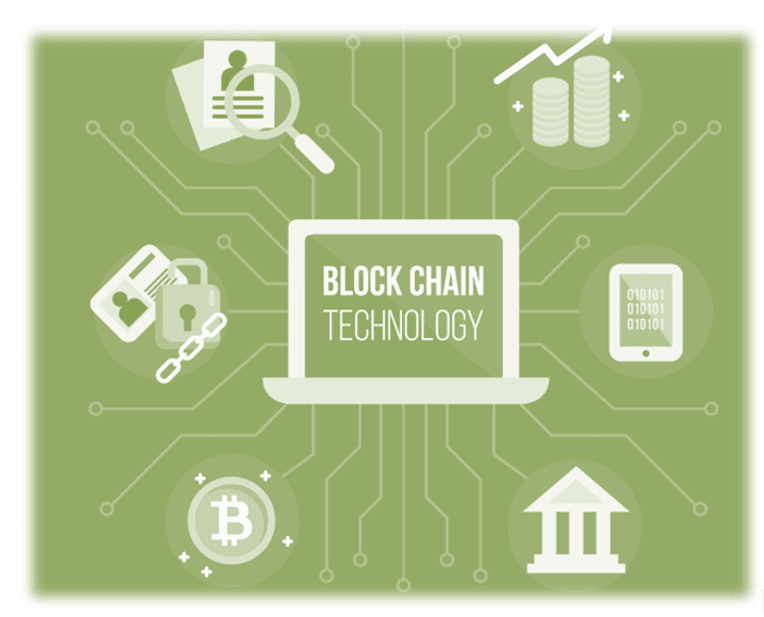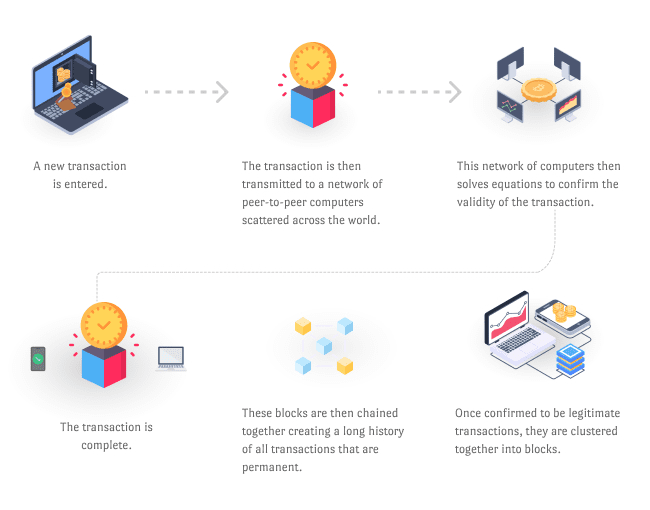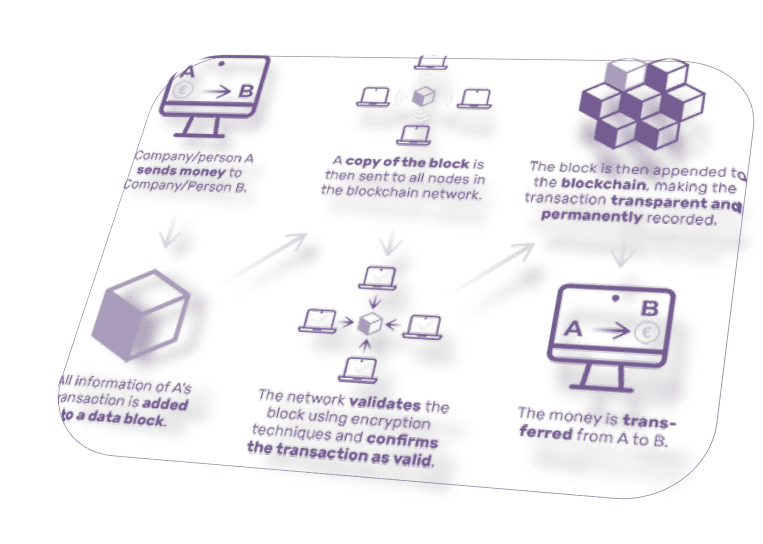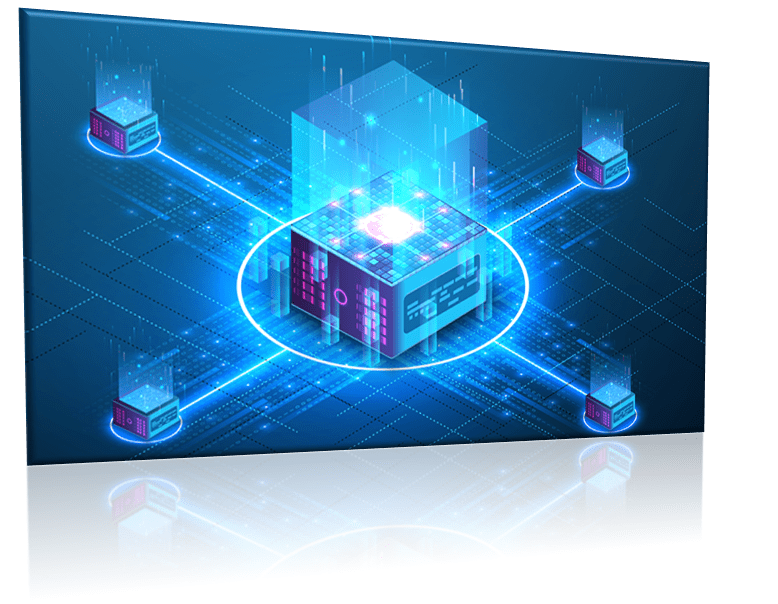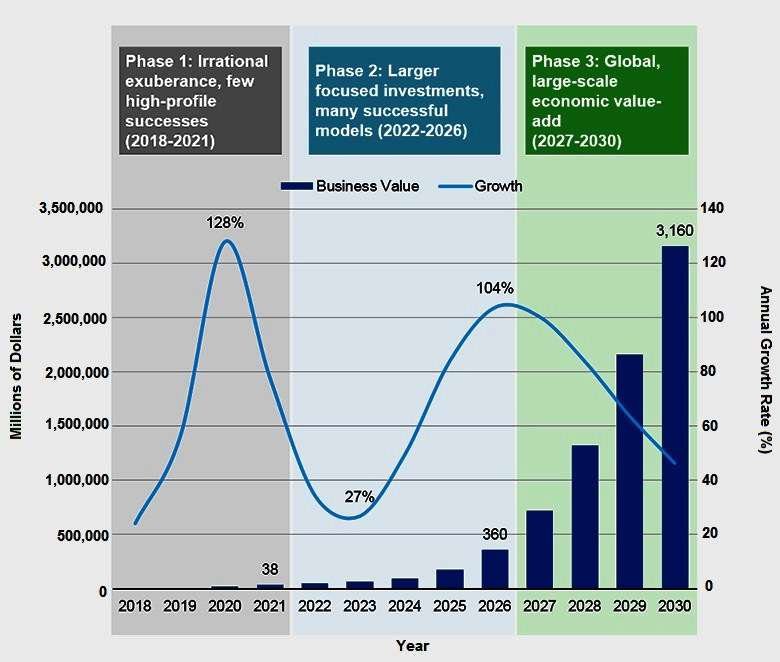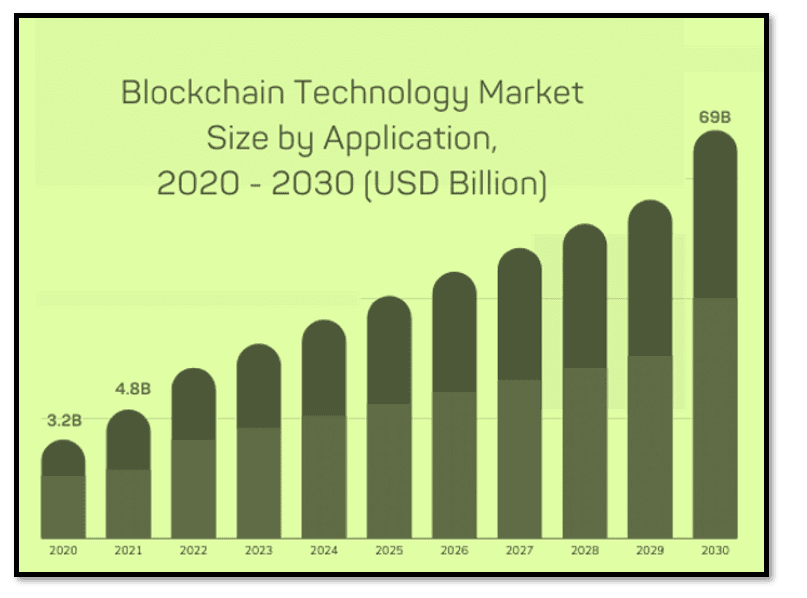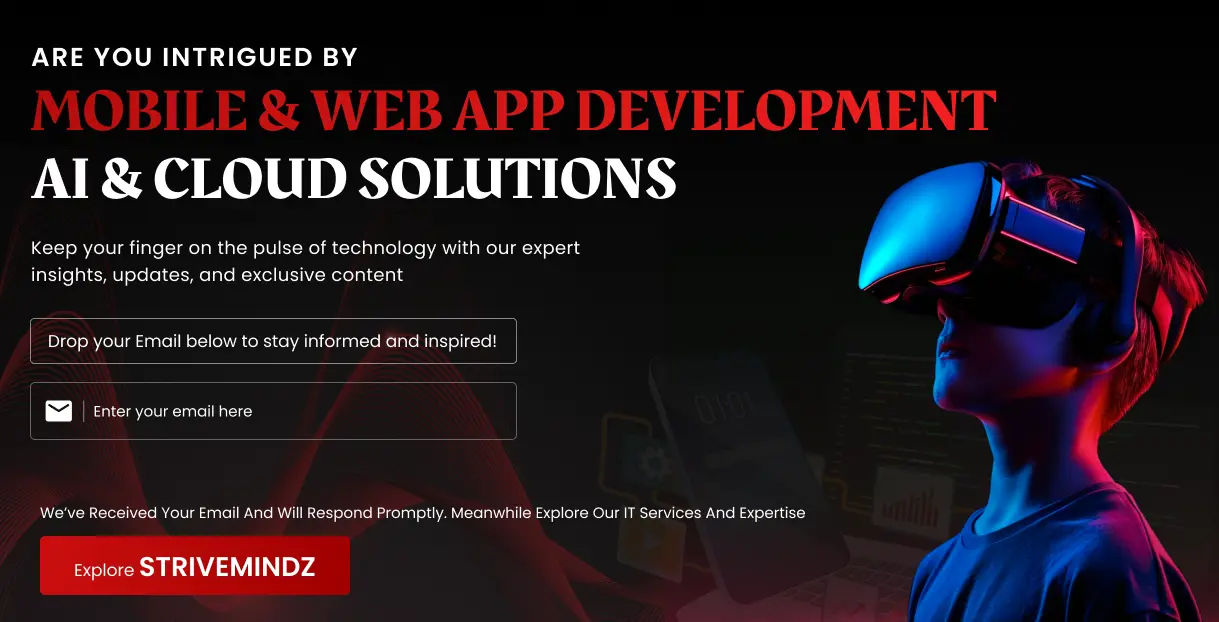Blockchain Application Development in 2023- Overview And 7 Steps To Develop It
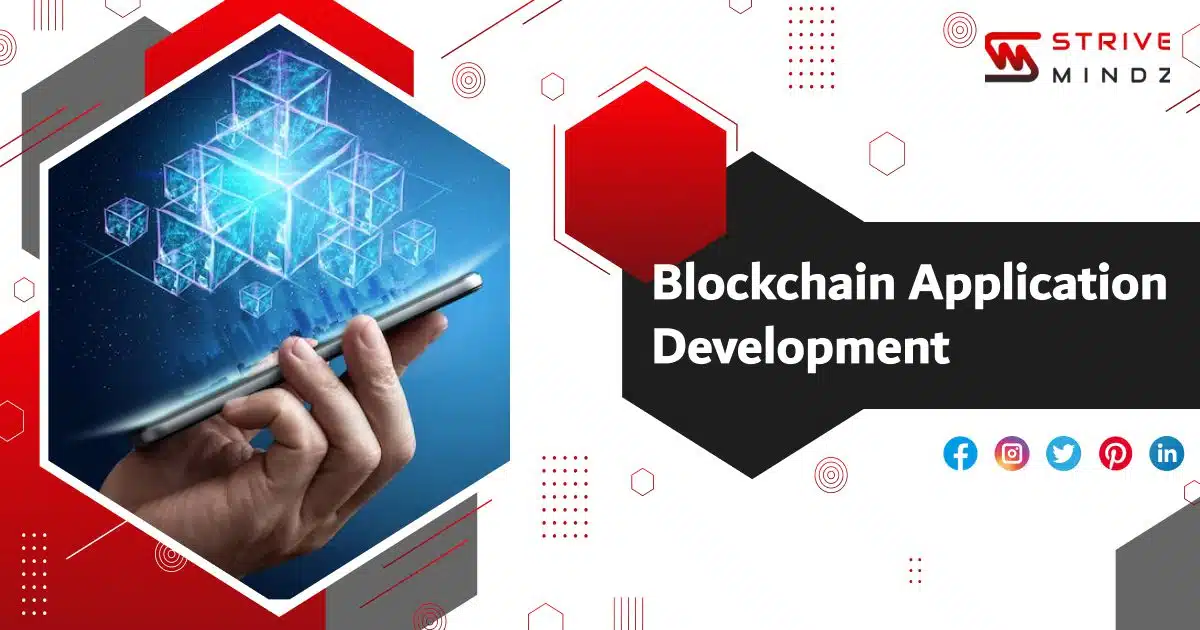
Blockchain application development companies are experiencing rapid growth due to an increase in demand for blockchain-based solutions and applications. In November 2021, the value of Bitcoin crossed a whooping level of USD 65,000. Since then, people have started talking about two important aspects – such as: What is Bitcoin?, What is blockchain? or Ways to develop a blockchain application?
If you also belong to the category of those people who want to know about “what is blockchain” and “ways to develop Blockchain” then stay tuned to this article.
What is The Need for Bringing The Blockchain Application?
(First, let’s understand the “need for bringing blockchain applications” then learning about “what is blockchain?”)
In the late 1990s, the IT revolution started taking place in the global market. At that time, companies as well as individuals were appreciating this revolution. Although, there were many key reasons to appreciate the IT revolution – such as: digital prosperity, strengthening security features, employment opportunities, etc.
So, the IT revolution effectively brought better security features for maintaining system confidentiality and privacy. For example: “firewalls”, “virus protection method”, “electronic database”, etc.
As time passes, people started doubting over the security measures. For example: in the year 2005, around 136 data breaches were reported by the “Privacy Rights Cleaning House”. Alone in the year 2005 – around 4500 data breaches were reported that adversely affected 816 million individuals.
For many years IT professionals have been struggling due to these 4 types of data breaches:
- Ransomware.
- Malware.
- Phishing.
- Denial-of-service (DoS).
Thus, IT professionals have started shifting towards the development of blockchain functions for making transactions more secure and to keep data in safe hands.
What is Blockchain?
Blockchain technology is the database mechanism that allows businesses to keep transparency in information sharing within the network of a business. It enables decentralized peer-to-peer networks.
We know that the above definition sounds technical. So, let’s understand blockchain in simple words – a blockchain database store information in blocks that are linked with each other like a chain.
- Data is effectively chronologically consistent in the block chain. So that the data cannot be deleted or modified. It makes it more secure and reliable in an effective way.
- For example: suppose you created a ledger in your own system (without using any blockchain technology). There is a high probability that your system can be hacked or third parties can enter in your system.
- However, if you created a ledger through block chain applications then your data will not be going to stay in one specific system. Your data will be distributed across different channels in the network. Thus, it makes it next to impossible for third parties to break down in your system.
So, you need to understand that blockchain technology will help you to allow built-in mechanisms so that you can prevent unauthorized transactions. Traditional technological systems incorporate major challenges in keeping transactions secured and optimized. Thus, the use of blockchain technology will be going to support you in forming a secure database.
How Does Blockchain Work?
In order to deliver you a better understanding of Blockchain’s working mechanisms. We have created a list of key areas that are responsible for running blockchain networks.
- Peer-to-peer networks.
- Cryptographic keys.
- Storing the transactions values.
Step 1: A transaction is entered into the system. Now, the blockchain system will be going to send the transaction across a different peer-to-peer network.
Step 2: After getting the transaction, the networks of the computer will be going to validate the transaction through different cryptographic keys (crypto keys can be private or public).
Step 3: If peer-to-peer networks think that the transaction is legitimate then it will form a new block or data will get placed into the existing block.
(Important note: legitimacy is checked in blockchain through the identification of crypto keys).
Step 4: After the transaction is approved then it gets permanently placed into the blocks.
In order to include all these key functions in your blockchain application or in your current application then you can search for a blockchain development company.
4 Key Functions of Blockchain
There are 4 key functions of blockchain as follows –
You need to understand that blockchain includes numerous functions and you can also form different models by properly utilizing these functions. However, we included 4 key functions of the blockchain to give you basic insights about it:
-
Smart contract
In our real life, we make legal agreements or contracts with different parties. If any party breaches the contract or fails to comply with it then it can create legal trouble for them. On the other hand, the smart contracts of blockchain get automatically executed on the pre-defining condition.
For example: in our real lives, if any party breaches the contract then we used to take cases to the courts and honorable judges announce their decision. But, in blockchain smart contracts get automatically placed if a predetermined condition gets placed.
-
Shared ledger
This function helps in distributing the ledger across the different networks. With the function of a shared ledger, repetition among the transactions gets completely overcome.
-
Permissions to execute the transactions
The transactions can be executed on the bases of secure, authenticated and in a higher verifiable format. The permissions can be executed through the verification of crypto keys only. Eventually, it helps in making the transaction more secure and reliable.
-
Consensus (a general agreement)
The consensus is entirely based on all parties. It is like the digital agreement among the parties. There are three main types of consensus – such as:
- Proof of Stake.
- PBFT (Practical Byzantine Fault Tolerance).
Features of Blockchain Development
This technology incorporated four main features – such as:
-
Decentralization-based function
Decentralization in block-chain refers to transferring control and decision-making from various centralized entities. For example: do you know why Bitcoin are so popular? Because people consistently say that it will demise the authority of the sovereign government over the currency and it will give control to the public.
- In this way, it can be analyzed that decentralization is the main feature of blockchain and cryptography. Decentralization effectively transfers authority and responsibility from private/government entities to public.
- Now, you may be getting a question in your mind – if blockchain’s decentralization function is for transferring authority between the public domain to the private domain then this feature is not useful for me.
Although, you are not partially wrong.
This feature of decentralization will be going to help you in creating a providing a better opportunity to create custom campaigns for specific brands, products and for audiences.
In reality, centralized platforms (for example: government created currencies and government-controlled entities) are dominating the administration for a long time.
In this case, the decentralization feature of blockchain is not less than any blessing for the general public.
-
Faster settlement
In the 1980s, the process of deregulation of financial markets started to take over numerous countries. At that time, banking industry had gained a significant support and upliftment in the global financial market.
- However, people consistently blame the banking industry for an unbelievably slow rate of operations and slow speed.
- The ultimate solution to this problem is the introduction of blockchain technology. For example: blockchain applications can transfer money in much less time as compared to the traditional financial system.
- For example: if you are indulged in any cryptocurrency trading then I am sure that you are aware that USDT transactions only take a few seconds in transferring from 1 account to another account.
[Important note: to become the fattest mode of monetary transaction exchanger – blockchain applications are required to beat the transaction speed of the VISA. Currently, VISA transactions proceed at the speed of 24,000 tps. ]
-
Cannot be corrupted
in the above section, a discussion has been conducted regarding the peer-to-peer networks. So, when a fully distributed ledger has been distributed across different networks then it does not incorporate any probability for getting corruption.
For example: every node incorporates a copy of the digital ledger. So, it is next to impossible for duplicating, deleting or modifying transactions. If a single transaction gets impacted then it will be going to reflect in the entire ledge or peer-to-peer network.
-
Profound security levels
The utilization of cryptocurrency helps in the distribution of the ledger for providing an order with a history of events. It also incorporates simply a trust with the timestamp. The main elements behind providing the transaction functions.
You need to understand that there are 3 main types of cryptographic algorithms – such as:
- Hash functions.
- Symmetric key-based algorithms.
- Asymmetric-key algorithms.
- Encryption and Decryption of the different types.
Steps to Develop Blockchain-Based Technology
There are 7 key steps that are required to develop a Blockchain-based algorithm from Scratch
Step 1: Identity the key issue or challenge
You may be get impressed after knowing about various key features of blockchain technology. However, before jumping into the decision for designing a blockchain-based application you should be aware of your major business issues.
Recommendation: you need to first develop your problem statement that should be able to outline all the business-related challenges. Through the problem statement, you are required to check whether blockchain development services are capable for solving your current problems or not?
Once you get the self-approval then you are ready to go for adopting blockchain solutions.
[Important note: this step is significant because it helps you to decide – whether you should migrate to the blockchain solutions or not?]
Step 2: Select the best blockchain platform
Now, you have three options:
Option #1: Create a new blockchain network
- You can opt for creating a new blockchain framework. In the new framework, you will have control over everything – such as: transaction validation, token fees, tech stack, etc.
- Right now, you may be feeling excited about creating a new framework by using blockchain development tools. But hold on!
- This approach is highly costly and you are required to spend a lot of your precious time into the development process.
Option #2: You can also adopt cloning of popular blockchain platforms
- If you have a lack of time then you can adopt the approach of cloning popular blockchain platforms. There are many blockchain-based applications that are based on open-source platforms and you can effectively fork their repositories.
- You can deploy the code of various open-source platforms on your own server in an effective way.
- If you are adopting this approach then make sure that you should include different nodes in the transaction network for validating the transactions.
- Here, you maybe you want to ask about which is the most effective blockchain application open-source platform?
The answer to this question is “Ethereum”.
- Ethereum is completely open source and it entirely incorporates key functionality of smart contracts.
- Ethereum also utilizes different proof-of-work that is called as “Ethash”.
- The best part is that – all the smart contracts in Ethereum is written in the Solidity programming language. The Solidity programming language is a subset of JavaScript so you can easily understand it.
Option #3: Use different tokens on existing blockchain platforms
In this option, you need to create tokens and then you can deploy them on the existing running blockchain platform. For example: in the previous point, it is suggested to you to effectively focus on adopting open-source technology (Ethereum).
Now, you also have another option – you can create tokens and you can deploy them on the existing blockchain-based network like Ethereum. The reason behind suggesting Ethereum is that it will offer you different APIs, algorithms and key mining strategies for easily implementing blockchain in your application.
Step 3: Prototype development
Prototype will act as the roadmap for your process. You need to evaluate about different key aspects that need to be included in your blockchain application. For example: during Prototype development, you need to decide which part will be placed towards “on-chain” development and which part will be placed towards “off-chain” development.
[Recommendation: during the prototype development, it is important that you should focus on keeping on-chain APIs separate from off-chain APIs. In case, if you want any existing blockchain platform then it will be easier for you to host it at different place].
Step 4: Decide about the technology that needs to be involved
In this step, you are required to decide about specific technologies that need to be involved in the blockchain application development:
[In the below section, we are suggesting some basic technology to involve during the application development process]
- js – Ethereum JavaScript API (Documentation)
- Solidity for smart contracts.
- Embark – the framework for serverless decentralization applications using Ethereum.
[Below are certain frameworks]
- Truffle: this is the popular Ethereum development and testing framework development.
- Metamusk: this framework is used for running Ethereum applications.
Step 5: Make a Choice Between Public and Private Networks
After making a selection for technology, you can be required to make a choice for selecting public as well as private networks.
- However, if you want to go for a private blockchain – then it will be more time-consuming for you because public domains are considered as slow and resource-intensive.
- So, it is beneficial for you to select a private network because it will provide you with a better cost-benefit approach.
Step 6: Build Your APIs
You are required to effectively build your own APIs. Here, it is important to understand that you should build APIs for the following major areas – such as:
- Data storage and retrieval.
- Smart asset life cycle management.
- Smart contracts.
- Data authentication methods.
Step 7: Actual Development Work
After selecting the most important components for blockchain-based solutions, your actual creation of the blockchain development starts. Blockchain developers are required to create their own contracts/tokens in the Solidity language for Ethereum.
Cost to Develop Blockchain-Based Applications?
The cost of building the blockchain application on popular platforms lies between $6,000 to $400,000. You can build different types of blockchain applications on popular platforms such as: Ethereum, Hyperledger fabric, Ripple, etc.
On the other hand, blockchain-based app developers mainly charge $30 to $59 per hour bases. Although the cost for development mainly depends upon various key factors such as: your project requirements, requirements for specific frameworks, requirements for all the technical tools, etc.
The Final Words
At every stage of development, you need to make profound decisions for collecting important insights to create your blockchain application. However, if you are facing any issues then you can connect with the best blockchain developers.
Finally, it is suggested that you can select any existing blockchain platforms because it will make your work more simplified. Although, if you will adopt blockchain application development then it will going positively create a better service experience for your audiences or users.
In the long run, it is a fact that blockchain-based solutions will be going to take over all sectors due to strengthening security features, higher scalability, decentralized processes, etc.
FAQs
What is blockchain app development?
Blockchain development is the process of developing and maintaining a different blockchain platform. Through blockchain app development – you can form digital currencies, smart contracts, applications, etc.
What specific coding is used in blockchain development?
C++ is the primary language that is used in the blockchain development process. The use of C++ language helps developers to conduct run-time polymorphism, and function overloading and to focus on the multi-threading approach.
Can I use blockchain in application development?
Yes, you can use blockchain in the application development process. You can build applications into open-source blockchain platforms.
What are the key pillars of blockchain technology?
There are three key pillars of blockchain technology such as: decentralization, transparency and immutability.
How many types of blockchains are available?
There are four types of blockchain such as:
Public blockchain
Private blockchain
Consortium blockchain.
Hybrid blockchain
